Silent Era Home Page > Home Video > Tartuffe

Reviews of silent film releases on home video.
Copyright © 1999-2024 by Carl Bennett
and the Silent Era Company.
All Rights Reserved. |
Tartuffe
(1926) |
Director F.W. Murnau’s turn on the well-known Jean-Baptiste Molière play of hypocrisy and greed was wrapped in another story of greed and attempted murder.
Murnau opens the film with a modern-day take on the theme. A greedy and hypocritical housekeeper has been working on a wealthy old man, attempting to coerce him into writing her into his will. Having convinced him that his grandson has been living an excessive and dissipating lifestyle as an actor, she has been manipulating the old man’s affections away from the grandson. At the same time, secretly, she has been slowly poisoning the old man. Just as she has succeeded at obtaining the transfer of will, the grandson arrives.
The main Molière story is played out as a film-within-a-film, presented by the disguised grandson to the old man and his housekeeper. The self-righteous Tartuffe (Emil Jannings) has been bending the sensibilities of the rich Orgon (Werner Krauss) away from the extravagant to the austere with religious puritanism, and in turn alienating him from his loving wife Elmire (Lil Dagover).
When Elmire discovers the amount of money that Tartuffe has been sucking out of Orgon she goes to him, only to witness his slavish devotion to Tartuffe. Convinced that his wife will see the path that Tartuffe has illuminated for him, Orgon brings them together. Tartuffe is more interested in Elmire’s feminine features that her request that he leave their house. Elmire tells her husband, who refuses to hear such slander against his friend in God. Elmire offers to prove the claim.
Elmire invites Tartuffe to tea and hides Orgon in the room to observe. Tartuffe senses a trap and turns the deception against Elmire, totally swaying Orgon to Tartuffe. Taking out all the stops, Elmire throws herself at Tartuffe, who is unable to restrain his lustful urges. On the verge of handing over everything to Tartuffe, Orgon is again brought to witness. Now drunken and full of lechery, Tartuffe is revealed not only as a hypocrite but also as a branded criminal. Mole-like Tartuffe slinks away into the dark as the couple are reconciled.
We are reminded of the film-within-film context as the nephew next reveals to his grandfather the housekeeper’s heinous plan, poison and all.
If you do not find yourself in awe of the stupidity of Orgon’s mindless infatuation with Tartuffe, you will be impressed with Jannings and Krauss, two of Germany’s leading film actors from the 1920s. Both turn in delicious performances, Krauss all meekly slavish (and without extreme makeup, unlike his better-known films) as the newly-converted religious zealot, and Jannings with his robotic gait and rodent-like, beady-eyed gazes as the human leach.
When Tartuffe was produced, four separate camera negatives were shot and assembled: one for domestic German release, two for general world release, and the fourth specifically for the United States of America. The German print and the USA print (donated by the Library of Congress to the Bundesarchiv-Filmarchiv and restored by Friedrich-Wilhelm-Murnau-Stiftung in 2002) have survived the years.
— Carl Bennett
|
 Kino Classics Kino Classics
2020 Blu-ray Disc edition
Tartuffe [German language export version] (1926), color-tinted black & white and black & white, 70 minutes, not rated,
with Tartuffe [USA release version] (1926), color-tinted black & white, 63 minutes, not rated, and The Way to Murnau (2003), color and black & white, 35 minutes, not rated.
Kino Lorber, K24652, UPC 7-38329-24652-5.
One single-sided, dual-layered, Region A Blu-ray Disc, 1.33:1 aspect ratio image in pillarboxed 16:9 (1920 x 1080 pixels) progressive scan AVC (MPEG-4) format, SDR (standard dynamic range), 32.0 Mbps average video bit rate, 1.8 Mbps audio bit rate (German version 5.1), 384 Kbps audio bit rate (German version 2.0), 224 Kbps audio bit rate (audio commentary) and 1.5 Mbps audio bit rate (USA version), DTS-HD Master Audio 48 kHz 5.1 surround sound (German version), Dolby Digital 48 kHz 2.0 stereo sound (German version) and LPCM 48 kHz 2.0 stereo sound (USA version), German language intertitles (German version) and English language intertitles (USA version), optional English language subtitles (German version), 9 chapter stops (German version); standard BD keepcase; $29.95.
Release date: 28 April 2020.
Country of origin: USA
Ratings (1-10): video: 9 / audio: 8 / additional content: 7 / overall: 8.
|

This Blu-ray Disc edition has been mastered from a 35mm German language print held by Gosfilmofond film archive with missing fragments conflated from an incomplete Swiss print held by Cinématheque Suisse and from the USA release version held by Bundesarchiv-Filmarchiv (German language export version) [still frame above] and from the 2002 35mm preservation negative held by Bundesarchiv-Filmarchiv (USA release version) [still frame below]. The prints and scans are very-good to excellent, with the USA version holding a little more image detail overall and the German version slightly lighter in its highlights. No digital processing has been done to remove dust and speckling or to stabilize the image, so there is some minor image movement within the frame and the usual amount of minor emulsion damage, scratches, dust and speckling in both versions of the film.

There are differences between the two prints: differences in performance and in camera angles due to the fact that multiple negatives were often produced in the twenties for domestic and foreign release. In addition, the USA release version is missing footage that remains in the German version, some of which is identified in the accompanying audio commentary.
The German version of the film is accompanied by a small orchestra music score arranged by Robert Israel presented 5.1 surround sound and 2.0 stereo sound. The USA version of the film is accompanied by a music score by Giuseppe Becce, adapted and energetically performed on piano in 2003 by Javier Pérez de Azpeitia and presented in 2.0 stereo sound. The sparkling music is well-performed and brings life to the USA print presentation.
The disc’s supplemental material includes an audio commentary by Troy Howarth (German version), and the documentary The Way to Murnau (2003) by Alexander Bohr.
As would be expected, this edition is of the highest quality and is highly recommended to fans of Murnau, Jannings and silent films in general.
|
|
USA: Click the logomark to purchase this Region A Blu-ray Disc edition from Amazon.com. Your purchase supports Silent Era.
|

|
|
|
Canada: Click the logomark to purchase this Region A Blu-ray Disc edition from Amazon.ca. Your purchase supports Silent Era.
|

|
|
|
This Region A Blu-ray Disc edition is also available directly from . . .
|

|
|
 Kino Classics Kino Classics
2020 DVD edition
Tartuffe [German language export version] (1926), color-tinted black & white, 70 minutes, not rated,
with Tartuffe [USA release version] (1926), color-tinted black & white, 63 minutes, not rated.
Kino Lorber, K24651, UPC 7-38329-24651-8.
One single-sided, dual-layered, Region 1 NTSC DVD disc, 1.33:1 aspect ratio image in full-frame 4:3 (720 x 480 pixels) interlaced scan MPEG-2 format, SDR (standard dynamic range), ? Mbps average video bit rate, ? Kbps audio bit rate, Dolby Digital 48 kHz 5.1 surround sound and Dolby Digital 48 kHz 2.0 stereo sound, English language intertitles, no foreign language subtitles, chapter stops; standard DVD keepcase; $19.95.
Release date: 28 April 2020.
Country of origin: USA
|
|
This DVD edition has been mastered from a 35mm German language print held by Gosfilmofond film archive with missing fragments conflated from an incomplete Swiss print held by Cinématheque Suisse and from the USA release version held by Bundesarchiv-Filmarchiv (German language export version) and from the 2002 35mm preservation negative held by Bundesarchiv-Filmarchiv (USA release version). The prints and scans are very-good to excellent, with the USA version holding a little more image detail overall and the German version slightly lighter in its highlights. No digital processing has been done to remove dust and speckling or to stabilize the image, so there is some minor image movement within the frame and the usual amount of minor emulsion damage, scratches, dust and speckling in both versions of the film.
There are differences between the two prints: differences in performance and in camera angles due to the fact that multiple negatives were often produced in the twenties for domestic and foreign release. In addition, the USA release version is missing footage that remains in the German version, some of which is identified in the accompanying audio commentary.
The German version of the film is accompanied by a small orchestra music score arranged by Robert Israel presented 5.1 surround sound and 2.0 stereo sound. The USA version of the film is accompanied by a music score by Giuseppe Becce, adapted and energetically performed on piano in 2003 by Javier Pérez de Azpeitia presented in 2.0 stereo sound. The sparkling music is well-performed and brings life to the USA print presentation.
The disc’s supplemental material includes an audio commentary by Troy Howarth (German version), and the documentary The Way to Murnau (2003) by Alexander Bohr.
As would be expected, this edition is of the highest quality and is highly recommended to fans of Murnau, Jannings and silent films in general.
|
|
USA: Click the logomark to purchase this Region 1 NTSC DVD edition from Amazon.com. Your purchase supports Silent Era.
|

|
|
|
Canada: Click the logomark to purchase this Region 1 NTSC DVD edition from Amazon.ca. Your purchase the Silent Era.
|

|
|
|
This Region 1 NTSC DVD edition is also available directly from . . .
|

|
|
 Kino on Video Kino on Video
2003 DVD edition
Tartuffe [USA release version] (1926), color-toned black & white, 63 minutes, not rated,
with The Way to Murnau (2003), color and black & white, 35 minutes, not rated.
Kino International, K320, UPC 7-38329-03202-9.
One single-sided, dual-layered, Region 0 NTSC DVD disc, 1.33:1 aspect ratio image in full-frame 4:3 (720 x 480 pixels) interlaced scan MPEG-2 format, SDR (standard dynamic range), 5.0 Mbps average video bit rate, 192 Kbps audio bit rate, Dolby Digital 48 kHz 2.0 stereo sound, English language intertitles, no foreign language subtitles, 13 chapter stops; standard DVD keepcase; $29.95.
Release date: 11 November 2003.
Country of origin: USA
Ratings (1-10): video: 8 / audio: 9 / additional content: 6 / overall: 8.
|

Another of F.W. Murnau’s major works is available in this DVD edition from Kino International. As noted in the presentation introduction, this edition has been prepared from a restoration print of the American release version of the film. Originally held by the Library of Congress, the sepia-toned 35mm nitrate positive was repatriated to the Bundesarchiv-Filmarchiv in Koblenz, which created 35mm restoration elements in 2002 in cooperation with the Friedrich Wilhelm Murnau Stiftung of Wiesbaden.
The very-good to excellent restoration print is highly-speckled at times during the film. While the image detail is excellent, the print is also slightly contrastier than it should be, with dark shadows and overly-bright highlights. A little dust is seen, and other print damage includes an occasional haze of emulsion scuffing and a few light scratches. We do wish that the speckling could have been cleaned up digitally before the disc’s release. In revisiting the disc on high-definition equipment, we were tempted to raise our evaluation of the video quality for the disc’s well-defined image detail but refrained for the source materials’ contrasty survival state. Still, the DVD images well on HD equipment.
The film is accompanied by a music score by Giuseppe Becce, adapted and performed on piano by Javier Pérez de Azpeitia. The sparkling music is well-performed and brings life to this presentation.
Also included on the disc is the documentary The Way to Murnau (2003) by Alexander Bohr.
Overall, despite its probably unavoidable shortcomings this edition is of the highest quality and is highly recommended to fans of Murnau, Jannings and silent films in general.
|
|
USA: Click the logomark to purchase this Region 0 NTSC DVD edition from Amazon.com. Your purchase supports Silent Era.
|

|
|
|
Canada: Click the logomark to purchase this Region 0 NTSC DVD edition from Amazon.ca. Your purchase supports Silent Era.
|

|
|
 Eureka Entertainment Eureka Entertainment
2005 DVD edition
Tartuffe [USA release version] (1926), black & white, 64 minutes, BBFC Classification U,
with Tartuffe: The Lost Film (200?), color and black & white, 37 minutes, not rated.
Eureka Entertainment,
EKA40074 (MoC 4), UPC 5-060000-401936.
One single-sided, dual-layered, Region 2 PAL DVD disc, 1.33:1 aspect ratio image in full-frame 4:3 (720 x 576 pixels) interlaced scan MPEG-2 format, SDR (standard dynamic range), ? Mbps average video bit rate, ? Kbps audio bit rate, Dolby Digital 48 kHz 2.0 mono sound, German language intertitles, English language subtitles, chapter stops; standard DVD keepcase; £19.99.
Release date: 24 January 2005.
Country of origin: England
|
|
This PAL DVD presents a surviving version of the film, which was restored in 2002 by the Bundesarchiv-Filmarchiv, Berlin/Koblenz, and the Friedrich Wilhelm Murnau-Stiftung of Wiesbaden, Germany, with German language intertitles and optional English subtitles, and has been transfered at a visually-correct speed.
The film is presented with a very good music score performed on piano by Javier Pérez de Azpeitia.
Also included is the documentary Tartuffe: The Lost Film by Luciano Berriatúa (37 minutes), a 16-page booklet with a new essay by film historian R. Dixon Smith, and a stills gallery containing 58 production photos.
North American collectors will need a region-free PAL DVD player capable of outputting an NTSC-compatible signal to view this edition. This edition is now out-of-print.
|
|
United Kingdom: Click the logomark to purchase this Region 2 PAL DVD edition from Amazon.co.uk. Purchase supports Silent Era.
|

|
|
|
Other F.W. MURNAU films available on home video.
Other silent era EMIL JANNINGS films available on home video.
Other GERMAN FILMS of the silent era available on home video.
|
|
F.W. Murnau filmography in The Progressive Silent Film List
|
|
|

SUPPORT SILENT ERA
USING THESE LINKS
WHEN SHOPPING AT
AMAZON



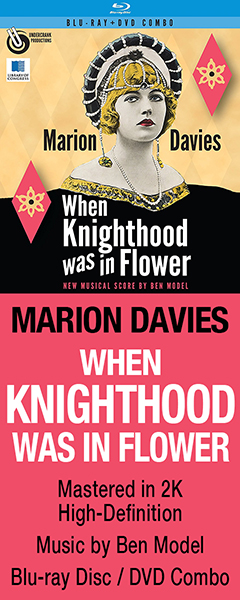









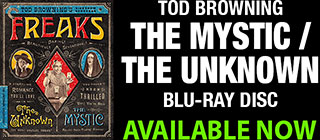


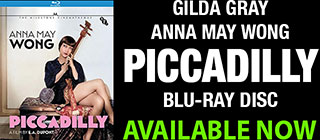








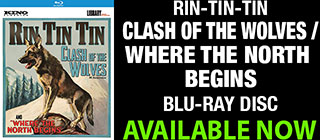









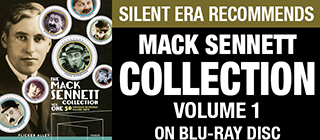






|





































